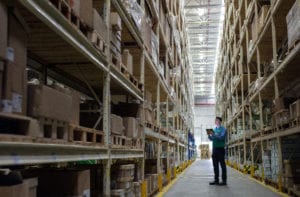
Most of today’s Mining, Minerals, and Metals production facilities require multiple electrical devices (IED on switchgears/ transformers, power quality meters) and complex process control systems to keep running production. However, with global warming as an overriding concern, output and quality priorities now compete with sustainability targets.
Regulators, shareholders, and customers are demanding that mining, minerals, and metals organizations:
- Deliver production quality and emissions quantity metrics
- Allow for benchmarking of efficiency gains
- Enable reporting of carbon emissions
- Combination of optimization of production outputs and minimizing of associated energy consumption
Integrating power and process systems effectively reduces energy usage (and associated carbon emissions) while optimizing production. Once regarded as two separate worlds, using new digital technologies to exchange critical information between power and process automation systems enables staff to coordinate and manage these assets as a single converged system.
Use case 1: Motor management at steel blast furnace operations
How does power and process convergence work in a real-world scenario? Consider a steel plant using powerful fans and electric motors to help limit the emissions levels of blast furnaces. The fans push furnace emissions through filters before expelling them through exhaust ducts. Overworked motors lead to downtime, resulting in high costs and added emissions from restarts. To avoid this, operations teams need an efficient maintenance strategy to measure and balance fan motor running hours.
When motors approaching their runtime limits are taken offline for maintenance, a replacement within the motors pool must quickly pick up the slack. This transition should be seamless to:
- Minimize interruptions of airflow treatment
- Avoid releasing extra emissions
- Keep production at optimum levels
When assessing the efficiency of the fan/motor network, facility personnel need to ensure the availability of sufficient medium-voltage substation power during startup and steady-state operations. Do not exceed upstream electrical infrastructure voltage and frequency thresholds to avoid overload and possible electrical protection equipment trips, causing lengthy plant restarts and downstream plant disruption. Managing this electrical transition is often a mistake-prone manual process involving various power and process operators monitoring and sharing information via non-automated methods.
This is where a converging power and process management approach makes sense. EcoStruxure Power and Process is an information management strategy combining electrical field device power load and status information (from protective relays and power monitors) with process variables such as time counters, negative pressure set points, and real-time negative pressure values.
Both motor/fan unit and plant power quality constraints and motor production and maintenance KPI data become part of the operational decision-making analysis. Artificial intelligence (AI) further assists operators with power recovery, material inflow reduction, and short production situations. This way, the facility reduces excess environmental pollution or an unanticipated plant blackout.
Use case 2: Conveyor and material movement control in mining
Consider a mining operation with variable frequency drive (VFD)-controlled conveyors, which move raw material toward downstream process equipment (DPE) such as a crusher or mineral separator.
In this case, a converged power and process information management system combines control-related information (such as belt speed, rate of volume moved per hour, weight, and material density) with electrical parameters (such as active, reactive, and apparent power, and power quality measurements) to optimize the overall production efficiency, safety controls, and uptime. A DPE setpoint determines the conveyor belt speed control, avoiding equipment underutilization or material spillage while optimizing energy consumption to avoid energy waste. The converged systems can now evaluate how much energy is consumed to move any production quantity. Then, comparing the current KPI with historical values, the system can alert the operator if a variable has changed in the conveyor, affecting conveyor efficiency.
For more information
Consolidation of automation and electrical operations boosts operational performance while lowering cost and carbon emissions. For more detailed power and process convergence use case information, download our new white paper, “Integration of power and process: A discussion beyond products or operations.”



